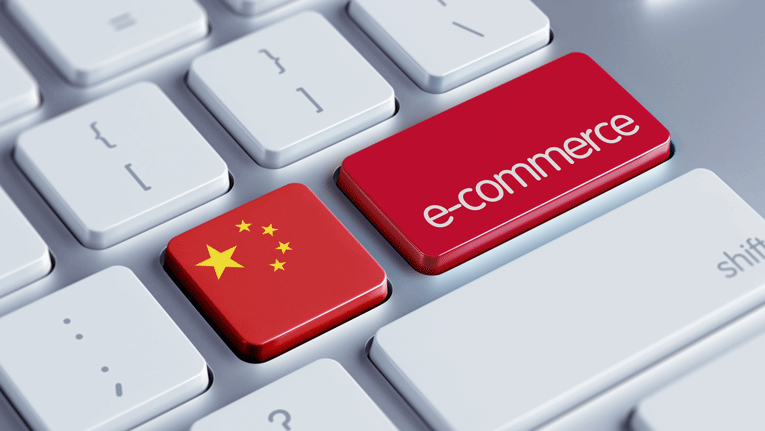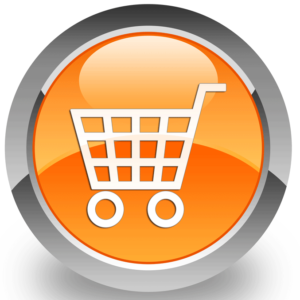 China has recently been rolling out a series of new policies to reform its management of cross-border e-commerce (CBEC). While reforms have mainly been focused on adjustments to tax policies, this April saw the List of Products Eligible for CBEC (Positive List) published in two batches.[1] The list clarifies which products can and cannot be imported via CBEC. David Ettinger of Keller and Heckman LLP says that the new rules have completely changed the regulatory landscape for CBEC in China, and will have a significant impact on the industry.
China has recently been rolling out a series of new policies to reform its management of cross-border e-commerce (CBEC). While reforms have mainly been focused on adjustments to tax policies, this April saw the List of Products Eligible for CBEC (Positive List) published in two batches.[1] The list clarifies which products can and cannot be imported via CBEC. David Ettinger of Keller and Heckman LLP says that the new rules have completely changed the regulatory landscape for CBEC in China, and will have a significant impact on the industry.
Checks and balances to booming CBEC
In 2014 and 2015, China issued a series of legal guidance at the central level to boost the development of CBEC; with the industry booming, the government is now looking to add some checks and balances. Notably, the Administration of Quality Supervision, Inspection and Quarantine (AQSIQ) released the Regulations for the Safety Supervision and Administration of Cross-Border E-commerce of Imported Food via Bonded Warehouse Model (draft) in October last year, which raised the regulatory bar for those distributing food via CBEC. Further, the draft amendment to the Implementing Regulations of the Food Safety Law, released in December 2015, explicitly stated that CBEC-imported food products shall comply with the Food Safety Law and all relevant regulations. Although this amendment is not yet finalised, it continues a trend in recent regulatory developments, with authorities narrowing the gap between regulations governing specially regulated products in CBEC and traditional import, while leaving some regulatory flexibility to the management of conventional products.
From negative to positive
In the past, commodities traded via CBEC were monitored via a risk management system, with safety risk analysis being performed and items being scrutinised in terms of safety and hygiene requirements. Under the bonded warehouse model[2] inspection procedures varied depending on the risk level of the product. Given that no standard risk analysis guidelines were established at the national level, local CIQs developed and implemented varying product classifications and clearance requirements on a discretionary basis. Per internal instructions from the General Administration of Customs (GAC),[3] as long as a product was not included in the List of the People’s Republic of China of Articles Prohibited/Restricted from Import and Export, was in a ‘normal’ amount and deemed to be for personal use, it would not normally be prohibited from entering China via CBEC.
This practice changed upon the establishment of the Positive List. The Positive List—jointly released by the Ministry of Finance (MOF) and ten other ministries and government bodies—includes tariff codes and product names of almost 1,300 permitted CBEC categories of commodities, along with various notes that provide additional regulatory requirements where necessary. The Positive List is apparently going to be a dynamic system and will be updated from time to time.[4]
While many approved products are listed without additional notes, a number of product categories do contain exclusions and additional guidelines. Specifically, government clearance requirements for special foods, cosmetics and medical devices were highlighted. On 15th May, the AQSIQ issued a notice[5] to clarify that products imported via CBEC are considered commercial goods and those imported via the bonded warehouse model must obtain a customs clearance certificate if they are listed in the Catalogue of Commodities Subject to Entry and Exit Inspection and Quarantine (Catalogue).[6] This further confirms the ‘commercial’ element of CBEC and the regulatory trend of CBEC products moving in the direction of being governed in the same way as products imported via traditional methods.
 Potential impact on individual sectors
Potential impact on individual sectors
China’s Food Safety Law, promulgated in 2015, sets forth strict supervision standards for special food products, namely infant and young children formula milk powder (infant formula), health food and formulae for special medical purposes (FSMP). Unsurprisingly, if these products have not obtained pre-market clearance from the government they are excluded from the Positive List and cannot be sold on CBEC platforms under the reformed system. However, there is slight variation in their respective management:
Infant formula
Starting from 1st January, 2018, all infant formula imported via CBEC must obtain a formula registration certificate from the China Food and Drug Administration (CFDA), following the Administrative Measures for the Registration of Baby Formula Milk Powder Products Formula (Registration Measures), which should be finalised soon. This suggests infant formula developed per foreign standards will not be available via CBEC platforms, unless its formula is also approved in China. Once the Registration Measures are published, the industry should gain more clarity as to whether special rules have been tailored to meet the needs of purchasers of infant formula via CBEC.
In traditional modes of import, before any infant formula can be shipped to China, not only must the formula be registered, but its overseas producers must also undergo Certification and Accreditation Administration of China (CNCA) registration (known as ‘producer registration’, this is separate from formula registration) and their overseas production site must undergo a full audit.[1] The Positive List remains silent in this regard; however, further clarification is expected as to whether all infant formula via CBEC must be sourced from CNCA-registered foreign producers.
Health food
In line with the requirements for traditional modes of import, health foods, other than vitamins and minerals imported for the first time, now need to be registered with the CFDA; vitamins and mineral supplements must complete CFDA notification. The new requirement will take effect on 1st July, 2016, when the Administrative Measures for Health Food Registration and Filing enter into force.
However, not all vitamin products are carved out from the Positive List. Specifically, the pre-clearance requirement for several unblended vitamins and their respective derivatives in the 1st batch list has been now removed. Further interpretations are expected, particularly at the local level, to provide more guidance to the industry regarding the export of these listed products. For example, issues surrounding special dosage forms (e.g. tablets, capsules and sprays), and health function claims that are permitted for the listed CBEC-imported vitamins need to be further clarified.
Other Specially Regulated Products
FSMP
Similarly, FSMP imported via CBEC will be required to obtain formula registration with the CFDA before being marketed. While the Management Measures for the Registration of FSMP will take effect on 1st July, 2016, it is not until 1st January, 2018, when a formula registration certificate will become a prerequisite for FSMP imported via CBEC.
Cosmetics
All CBEC cosmetics products must have already been registered or notified with the CFDA, in line with requirements for regular imports. In other words, both cosmetics imported through traditional trade channels and via CBEC will be subject to CFDA clearance. A list of products that have already obtained permission is available on the CFDA’s website.
Medical devices
Medical devices and related products are also now required to be registered or notified according to existing regulations before import via CBEC, which again puts the regularity requirements on par with the requirements that already exist for traditional modes of import. A list of medical devices that have already been registered (or notified) is available on the CFDA’s website.
The following table summarises government clearance requirements for categories outlined above. Currently, there is leeway for infant formula, health food and FSMP imported via CBEC due to later enforcement dates:
| Product | Requirement | Enforcement (traditional modes of import) | Enforcement (CBEC) |
| Infant formula | Formula registration | To be determined | 1st January, 2018 |
| Overseas producer registration | Already in place | To be clarified | |
| Health food | Registration/notification | 1st July, 2016 | 1st July, 2016 |
| FSMP | Formula registration | 1st July, 2016 | 1st January, 2018 |
| Cosmetics | Registration of cosmetics for special purposes; notification of cosmetics for non-special purposes | Already in place | Publication date of the Positive List |
| Medical devices | Registration/notification | Already in place | Publication date of the Positive List |
Because the Positive List was announced within a very short period of time, there are still a number of issues that require further government clarification. In fact, after soliciting opinions from major industry representatives on the effects of the new policy, several ministries, including the Ministry of Commerce, the GAC and the MOF, are considering a one-year postponement of the new policy,[8] while emphasising that the overall trend is to regulate CBEC products based upon the requirements of traditional modes of import. While the Implementing Measures of the Food Safety Law are expected to be promulgated later this year, more guidance will be provided to industry once the infant formula Registration Measures and the AQSIQ’s regulations for managing food that has been imported via CBEC and stored in bonded warehouses become publically available.
At the local level, several pilot cities are drafting their own rules for the inspection and quarantine of products on the Positive List. For instance, Ningbo is considering following the same import inspection requirements for products imported via traditional modes of import and bonded warehouse model CBEC; and the Hangzhou CBEC Pilot Zone is at the final stage of developing related registration guidelines for bonded warehouse model CBEC. Developments in these pilot areas should be closely monitored, as they tend to reflect central government’s intended direction for managing CBEC. Thus, any policies developed in these areas may well be rolled-out in others not long afterwards.
Keller and Heckman LLP is a global law firm founded in 1962. The Shanghai office opened in 2004, focusing on serving its global clients in the Asia Pacific Region regarding compliance matters from food and drugs, food packaging, cosmetics, consumer products, chemicals to medical devices. Keller and Heckman has an in-house scientific staff of chemists and toxicologists that works closely with the firm’s attorneys on matters of technical complexity. For more information, please contact David Ettinger at ettinger@khlaw.com, Jenny Li at li@khlaw.com or Yin Dai at dai@khlaw.com.
[1] http://gss.mof.gov.cn/zhengwuxinxi/zhengcefabu/201604/P020160407628544745898.pdf (first batch); http://gss.mof.gov.cn/zhengwuxinxi/zhengcefabu/201604/P020160415822493955077.pdf (second batch)
[2] In bonded warehouse model CBEC, goods arrive in bulk and are stored in a special supervision area in bonded zones before any online purchase order is placed. CBEC operators deliver goods to domestic consumers as individual packages once orders are generated.
[3] General Customs Notice [2014] No. 59
[4] http://gss.mof.gov.cn/zhengwuxinxi/zhengcejiedu/201604/t20160406_1939013.html
[5] In the old CBEC system where parcel tax applied, CBEC products were treated more as an article for personal use.
[6] The Catalogue is issued and maintained by AQSIQ. It determines whether a product is subject to import inspection and/or quarantine. It is more for the purpose of disease control and product safety assurance. If a product is on the Positive List but not in the Catalogue when it is imported via CBEC, it is cleared by customs without going through inspection or quarantine procedures; if a product is in the Catalogue but not on the Positive List, it can be imported through traditional trade, but not via CBEC.
[7] Currently, CNCA registration of overseas producers of meat, aquatic products, other dairy products and bird’s nest is also mandatory.
[8] New tariff policy for cross-border e-commerce likely to be postponed, China Daily USA, updated 10th May, 2016, viewed 16th May, 2016, <http://usa.chinadaily.com.cn/business/2016-05/10/content_25190880.htm>



Recent Comments